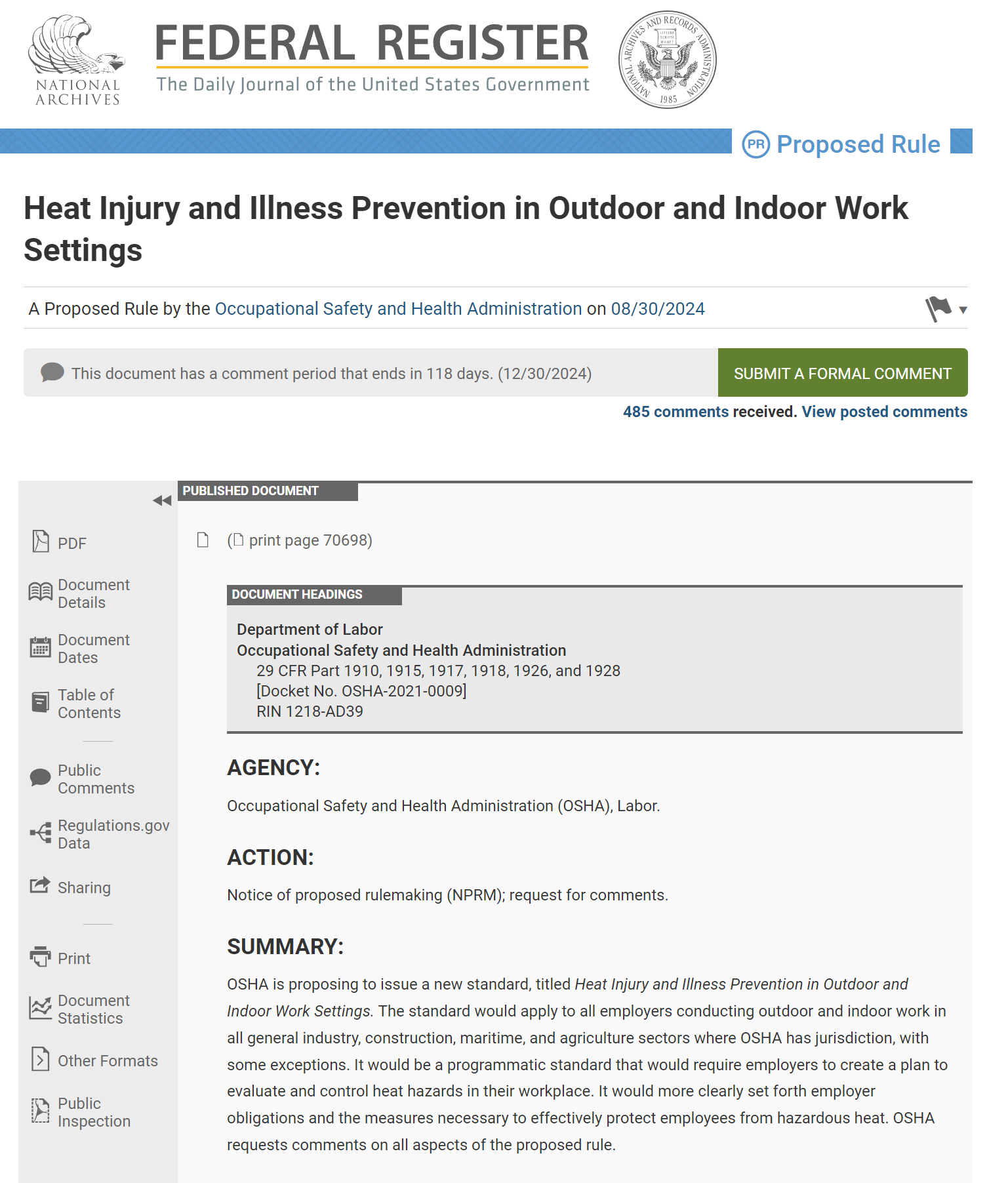OSHA publishes proposed Heat Injury and Illness standard
On August 30, 2024, the Occupational Safety and Health Administration (OSHA) published a Notice of Proposed Rulemaking (NPRM) in the Federal Register for a new rule titled “Heat Injury and Illness Prevention in Outdoor and Indoor Work Settings.” The proposed rule, spanning 375 pages, seeks to establish comprehensive requirements for employers to protect workers from the dangers of heat exposure in both outdoor and indoor work environments, such as non-ferrous foundries.

Under the proposed rule, non-ferrous foundries would be required to develop and implement a Heat Injury and Illness Prevention Plan (HIIPP), which includes measures such as:
- engineering controls
- administrative practices
- personal protective equipment
- worker training.
These requirements are designed to address the unique challenges of managing high-heat environments within foundry operations, ensuring that employees are adequately protected from heat-related illnesses. For a more comprehensive analysis of what a HIIPP plan must contain, visit: "What you need to know about OSHA's new heat rule."
The NFFS Government Affairs Committee (GAC) has already conducted a detailed analysis of the proposed rule and will be actively working to generate comments on behalf of our members and our industry. It is crucial that the concerns and interests of non-ferrous foundries are fully considered in the final rulemaking process. Members who are interested in working with the NFFS GAC to generate comments on the proposed rule should contact jerrod@nffs.org as soon as possible, as the deadline for submitting comments is December 30, 2024.
By engaging in this process, NFFS aims to represent the concerns and interests of the non-ferrous metal casting industry to ensure that the final published rule includes industry-specific considerations and provides for practical solutions that align with OSHA’s safety goals while ensuring economic and technological feasibility for non-ferrous foundries.

